Why I Stopped "Working" on My Creativity
And embraced the slow process of repairing my relationship with it
Keeping Creative Time—stories and tools to nurture whole creative lives 📚💪💖
Subscribe for the stories
Stay for the tools
Then share what matters to you
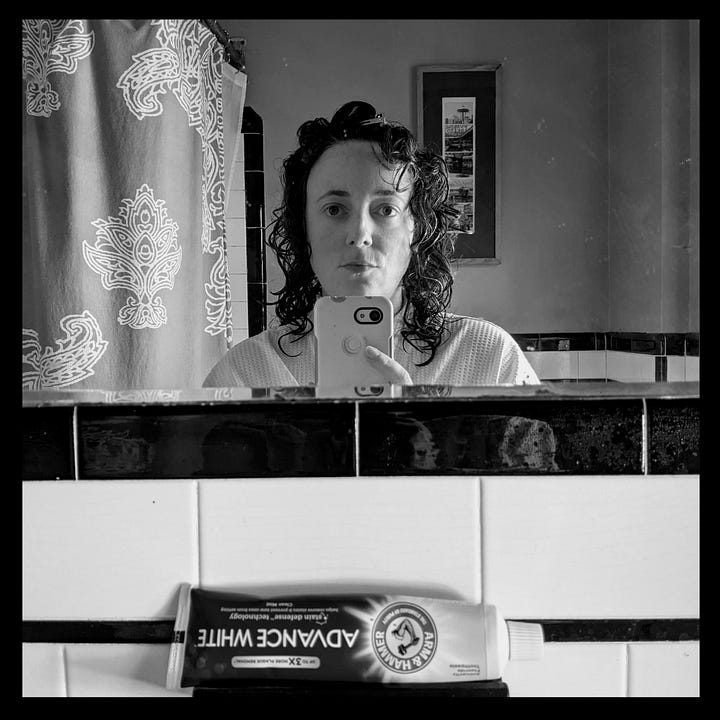
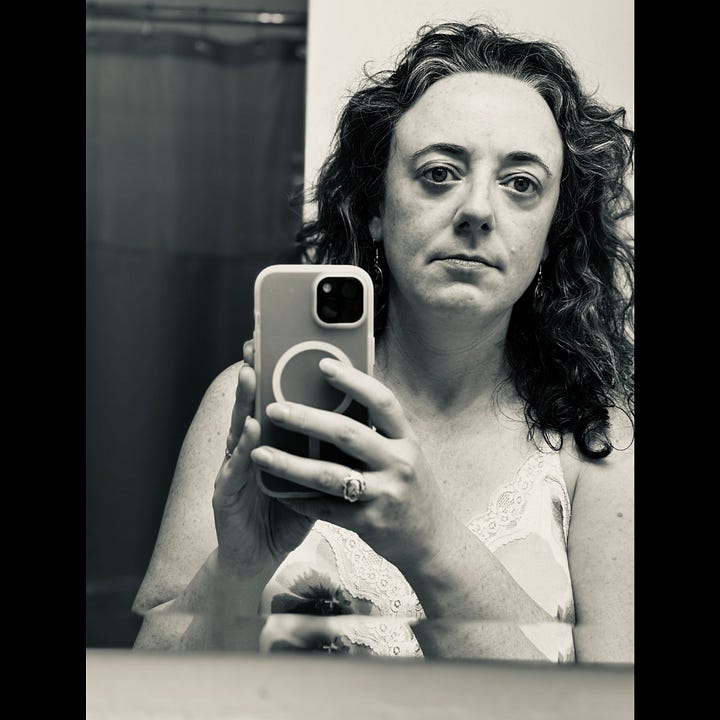
Certainly there is within each of us a self that is neither a child, nor a servant of the hours. It is a third self, occasional in some of us, tyrant in others. This self is out of love with the ordinary; it is out of love with time. It has a hunger for eternity.
Mary Oliver, “Of Power and Time” from UPSTREAM
Dear Creative Friends—perfectionism is a common creative block. I wish someone had told me that years ago. Oh, right—someone probably did, I just wasn’t ready to listen! But my body knew. It’s always known.
Creating habits takes time.
There are many habits I am trying to build and sustain—activities for which I’ve been “working on” for most of my adult life, or at least actively over the last ten years. I tell myself these habits are good for me, and many bring me great joy until I find I do not have “enough time” for them. It’s like money, there is never enough.
Second journal entry in five years while writing at Rebelle Bagels in Providence, Rhode Island, November 21, 2019
By age thirty-five, my body had grown weary of sending out SOS messages that I never paid attention to. Forced to get dramatic, in the fall of 2019, it produced a chronic pain in my upper left skull that radiated outward like a claw, sending me to a series of doctors, who, after reviewing my uneventful medical history that provided no clues to the present day problem, passed me along to the next one in the medical chain. On the day I wrote the above journal entry, I was in the midst of this doctor parade, living through yet another season of unmanageable stress that I told myself I could handle, because—I always had.
Curiosity about how I managed stress was not, to my memory, a question any of these specialists asked me about. It was all the usual recitation of family medical history, to which is only a tiny piece of my story. Looking back, I find it comforting to see that during this time of crisis, I took up journaling again. A courageous act. Admitting to my perfectionist self that yeah, maybe writing out my feelings helps. Maybe facing the uncertainty of the blank page is the medicine I need right now. Maybe I know myself better than the story these doctors are reading in my medical chart. Maybe I can use writing to heal. Maybe embracing my creativity can help me let go of the parts of me that are holding me back. Maybe I can grow into the person I want to be with.
A person who believes she is enough.
This week’s story is a replay from September 2023, written only a couple weeks after I enrolled in my first class at Story Parlor, a place here in Asheville that has transformed my life from that of a guilty writer desperate to make peace with her creative fire so she could make writing her career (see the me on the left in the above photo), to a woman who lives in harmony (most of the time) with the creative energy that flows through her, and is taking the necessary steps to make writing her career.
This woman (see the me on the right in the above photo) has learned that creativity is the breath, is the sunlight, is the water, a dance, a yoga flow, a freestyle, the beat in the song, the salt in a recipe, the smile on your face—essentials so deep in our core, that without them, we will always feel a hollowness that no craving can fill.
This woman reconnected with her oldest friend, creativity—aka, her inner wild child. And if you’re wondering, “Hey! How do I do that?” The first thing I want to say is, change takes . . . time.
Which is why I think you’re here. You want your short time on this earth to reflect the person you are.
It’s never to late to be the creative person you want to be.
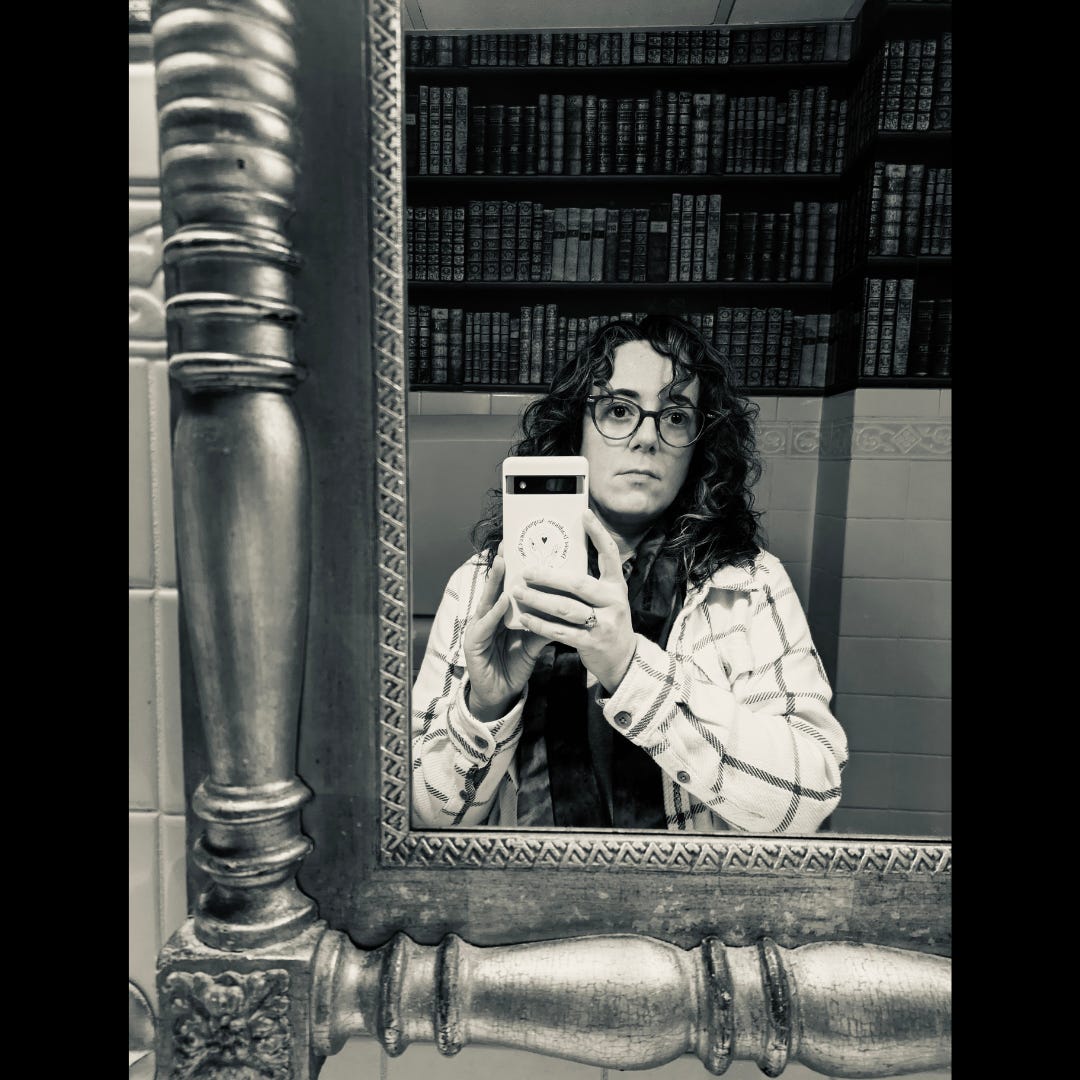
Creative Reflections
What’s something a past version of you would be proud of today? Now that you’ve thought of it, can you give gratitude to the past versions of you that carried you to this present moment?
And if you have a photo of past you and present you, line them up next to one another on a page or on a screen. Reflect back to yourself the goodness that is there. The strength, the inner wisdom, and the joy that motivated you to keep going from that day to this day. Let your past self, tell your present self, just how proud they are of everything you’ve become.
Enjoy reading, and take care y’all,
<3Faye
In Pursuit of Habits & Lost Time
This essay was first published in this newsletter on September 20, 2023.
Too busy or too tired to read? Or just want to hear my human voice? Check out the audio version.
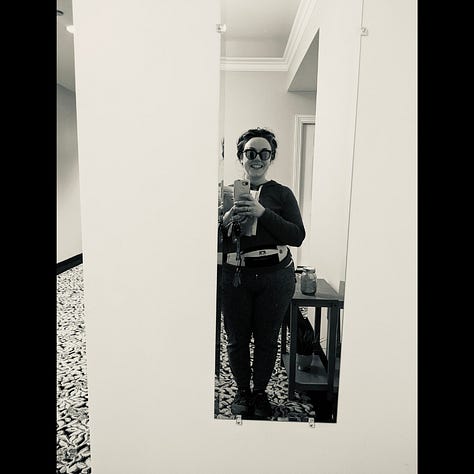
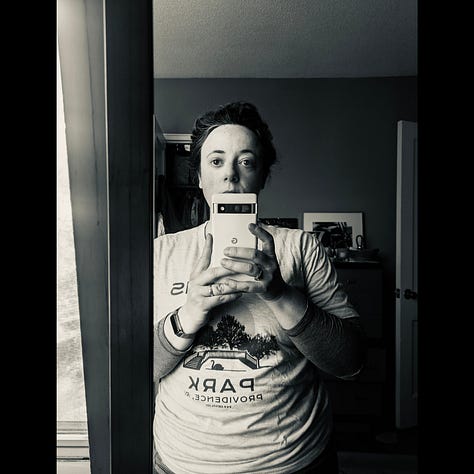
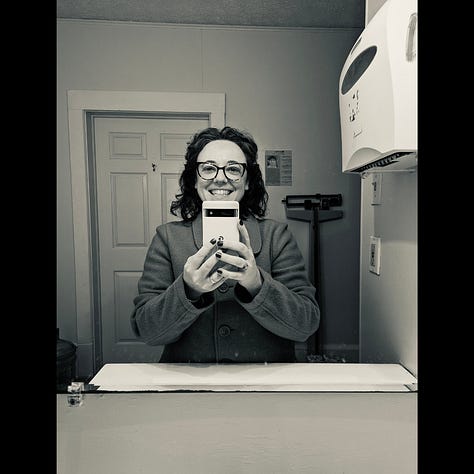
Building new habits is hard work. Slow, grueling work that no one will immediately thank you for. One of the lessons I’ve learned from severe burnout is that my creativity does not run on time, and has no concept of money. This is a good thing! And I would live here forever, in a world where time has no meaning and money no value. But let’s be honest, I’d probably never actually write. And I definitely wouldn’t be compelled to publish. Time gives our finite lives a pace.
It’s when I feel like I don’t have enough time, and can’t keep pace—this gives me anxiety. Money, too (especially when it’s linked to time). Learning to build healthy habits compounds over time, but so too, does the building of unhealthy habits. Feeding my anxiety daily doses of shame for not working hard enough on habits that foster creativity, this is one of my unhealthy habits that I’m trying to break.
Now you’ve met her. My friend, anxiety.
I’m trying to break up with her but she doesn’t always listen when I talk. Instead, she fancies rolling in on the morning’s high tide to lecture me on what’s important right now. Work. Goals. Performance-driven results. A paycheck. Aim higher. A paycheck with benefits. Faster now. Everyone’s watching you. “Step it up, Charlie!” she says, even though my name is not Charlie, the message is clear.
If anxiety is the water I swim in, creativity is my olive oil.
They don’t mix, and I’ve fought with them for so many years that some days I confuse them with the other. They become a child angrily coloring out of the lines. Distracted. Does whatever the body feels like doing. Listens for far too long to the same repetitive thoughts. Eats breakfast every day at noon. And when this insolent brat is done breaking all the clocks—because if she can’t be on time, then no one should—she sits down to write at top of the twenty-fifth hour; an imaginary space anxiety built for my creativity to hide from me. I had to grow strong enough to break. And when I finally did, there was creativity, waiting for me to return to her, even if now I was in pieces.
I’ve had to make a lot of changes since severe burnout and chronic anxiety took hold of my life. Repairing my relationship with creativity is the biggest, hardest, toughest change of them all. And it’s elemental. Like eating, drinking, sleeping, or breathing—creating is how I keep time in my own body.
Living life in our modern world slowly drained creative energy out of me, leaving more space for anxiety to settle in. One day I was a block of buoyant young tofu. The next, a dried out spent soybean. I didn’t know it was even happening to me. Couldn’t see it, hear it, or feel it. I thought I was in control, but it turns out that’s just the siren song of anxiety. Creativity doesn’t like to be controlled. She doesn’t like to be told what to do, or even when.
My creativity is my inner wild child. And I love her.
I knew it would take time to build all the new habits I was desperate to adopt to keep creativity by my side—going to bed early, meditating, morning pages, daily walks, keeping the apartment organized and clean, weekly artists dates, food to keep me nourished, staying hydrated, taking small breaks throughout the day—and so I thought, perhaps, she’d respond quicker to words than the mastery of perfect habits.
My life coach was there to remind me of the phrase, “Practice not perfection.” Could my creativity be a words of affirmation gal? If I spoke more gently, assured her I’m here to guide her not tear her down, would she feel safe? As I made plans for all the amazing things creativity and I could do together, I began to finally see who was pulling the strings behind all that negative self-talk and keeper of bad habit loops: anxiety. No wonder “working” on my habits felt like a cycle of continual failure. I can’t reason with anxiety’s demands. Nothing I do is ever good enough for her. She works me until I am too tired to remember why I am alive. Then shreds me up, tosses me with hot sauce, and rakes me over the coals. And I used to think she was my friend.
I hated to admit it. I was a person who wanted to be creative but I hadn’t made the connection that to keep creativity flowing, I needed to build a system of habits that nourish and sustain it. After years of ignoring my bad habits, they became like junk food for my anxiety. A bag of truffle-flavored potato chips or my favorite white cheddar and caramel-coated popcorn—I’ll never be satisfied with the serving size because they are designed to make me want more.
The habits I was “working on” in 2019 were just too many scattered, scrambled, little pieces of myself. I’d lost the panoramic view of my life. I’d lost the part of me who logically knew that if I wanted to reach a goal, i.e., write a book, then I have to begin with the habit of sitting down to write on a regular schedule.
If I want a future result, I have to show up today.
Unfortunately for me, I was trained to show up for work every day in pursuit of a paycheck—a survival skill, I know I’m grateful for—but that skill was only honed because the threat is immediate. If I don’t show up, I’ll be fired. The threat of not writing every day is less scary. If I’m too tired or there’s not enough time, I can always write tomorrow. I would never say this about sleeping or breathing. So why did I say this—for years!— about creating?
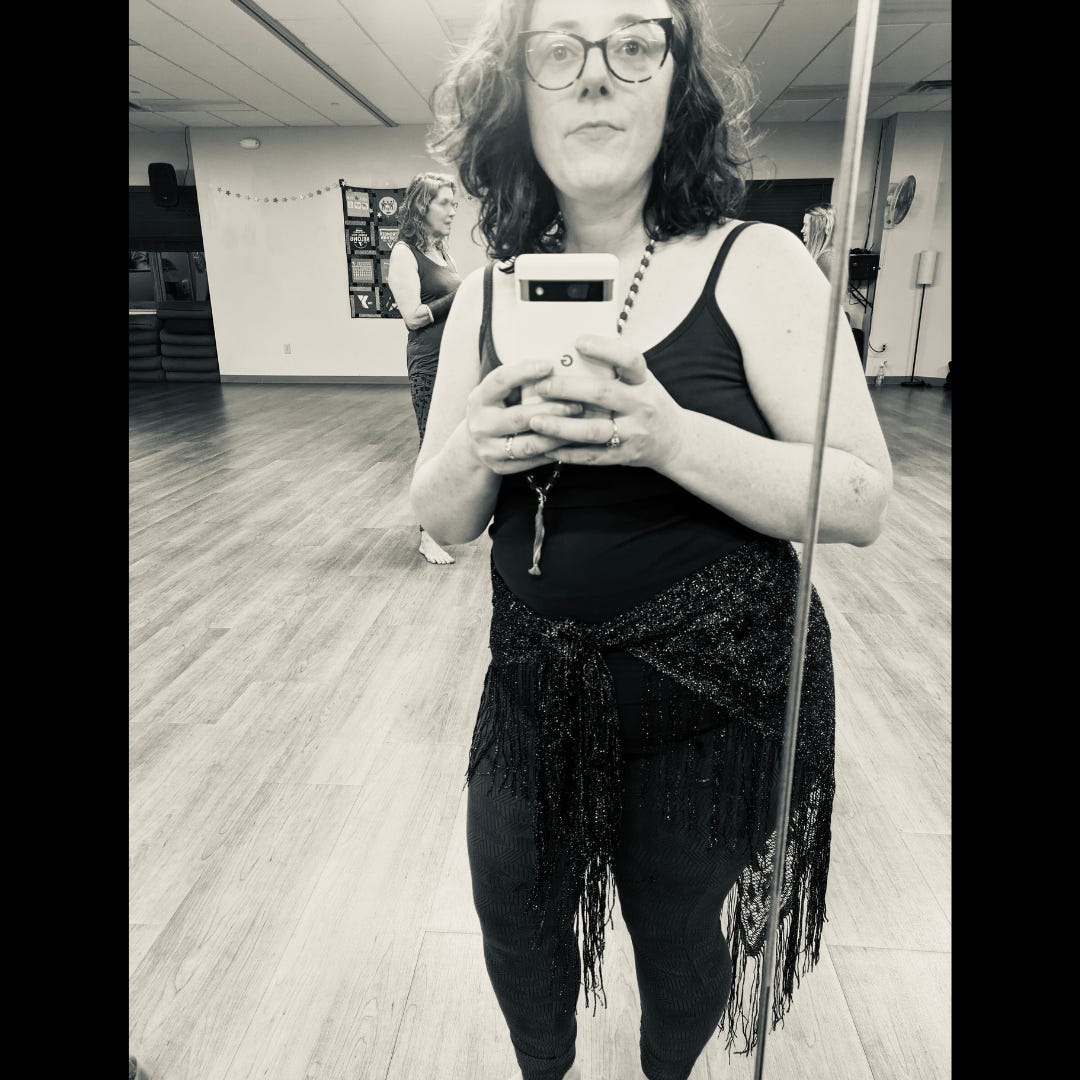
In James Clear’s best-selling book Atomic Habits, he lays out the case for why years of mastering bad habits, like my negative self-talk and working too long at the computer that I forgot I had a bladder, had failed to produce the creative results I knew I was capable of achieving. Like you, I have an ancient brain that descends from our Paleolithic ancestors who lived in an immediate-return environment. Their days were focused around present or near future concerns—finding food, taking shelter from a storm, avoiding predators. Then these ancestors learned to farm, and time took on a whole different meaning. Now, they had to plan ahead to ensure they’d have the food and resources they needed in the future. This is the modern environment our brains now live in. It’s called a delayed-return environment, and we did not evolve to live here.
Compared to the age of the brain, modern society is brand-new. In the last one hundred years, we have seen the rise of the car, the airplane, the television, the personal computer, the internet, the smartphone, and Beyoncé. The world has changed much in recent years, but human nature has changed little.
James Clear, ATOMIC HABITS
Could this help to explain why I never finished my first manuscript? Why after I started graduate school to become a librarian, my dream of publishing my first book now lives inside a three-ring binder in my closet. I was trained to work. I was not trained to write and work. This is what Clear says behavioral economists refer to as time inconsistency—the tendency to prefer quick payoffs to long-term ones. He writes, “The way your brain evaluates rewards is inconsistent across time.” My brain, like yours, is wired to work for a paycheck because it gives us an immediate reward, and fulfills our needs for food and shelter, not unlike the survival instincts of our ancestors who lived in the immediate-return environment. But we must also exist in a delayed-return environment. And since our brains get pretty faulty here, we have to trick them. We can’t trust our ancient brains to reliably be there for us in the modern world. This is why, to redirect my life—as a writer—I must develop a process of healthy habits that keep me connected to the page.
Every habit produces multiple outcomes across time. Unfortunately, these outcomes are often misaligned. With our bad habits, the immediate outcome usually feels good, but the ultimate outcome feels bad. With good habits, it is the reverse: the immediate outcome is unenjoyable, but the ultimate outcome feels good.
James Clear, ATOMIC HABITS
Before I could dive headfirst into developing my process, I was going to have to face what used to feel good and then felt bad. A typical night for me in 2019 was usually spent in the kitchen where I cooked away the day’s stress, then chased it down with an evening ritual where I performed, for my weary partner, a pre–and–post dinner version of my one hit wonder, “The Librarian Monologues,” before submitting to the couch to watch a show together on Netflix, scrolling the latest political feud or climate disaster news, visiting some online shopping sites, and going to bed; the dishes soaking in the sink and counters unwiped. These bad habits felt good because they marched to the beat of a familiar fight or flight pattern. I was comfortable. Why change course now? But ultimately, I felt bad by the time my head hit the pillow. Creativity had fled for higher ground, and I knew I’d wasted time doing and saying things that wouldn’t get her back. My future self was already regretting past and present me.
Time inconsistency. My brain had become a broken clock.
I’ve been trained to master a lot of skills that have aided in my survival. Creativity needs no training. Maybe that’s why adults scare it away with foolish things like time and money. My current relationship with creativity is a series of healthy habits I’ve been practicing over the past twenty-two months. Like me, they are a continual work in progress. Saying, I’m “working on” these habits is language I’ve let go of since that journal entry almost four years ago. Working on it took the joy out of it. Working on it made me feel like I wasn’t doing enough. And working on it sounded like I was being controlled by an evil taskmaster who’s power only grew when my shameful thoughts increased.
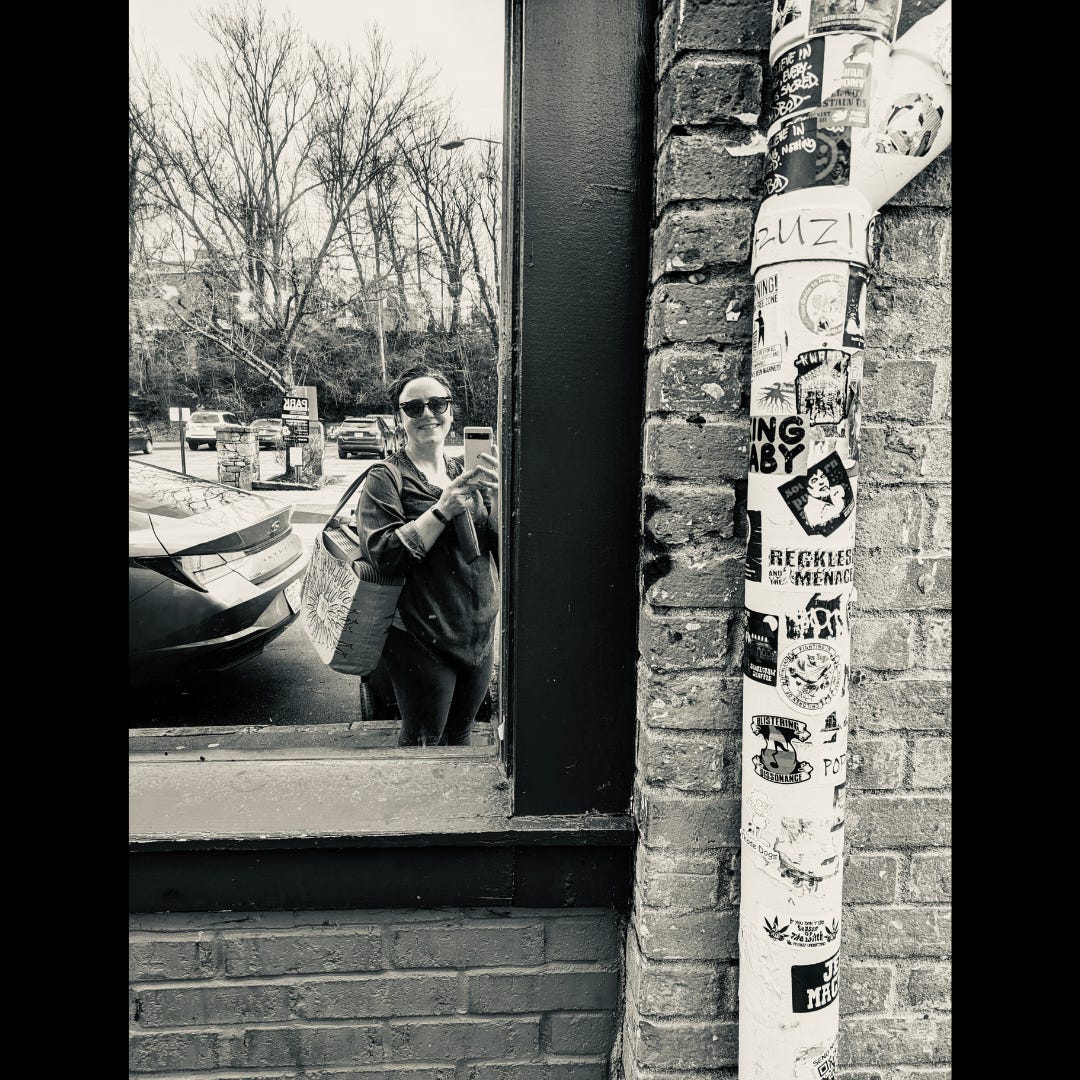
I’m in creative recovery now. It’s a slow process. No one thanks me for showing up, I have to thank myself. Even on the hard days. Same for not showing up, no one misses me. I have to miss myself. But I’m here. I am no longer staring down at the blank page while approaching forty. Future me is already different. I haven’t met her yet, but I know she’s waiting for me. For the writing.
This essay is for my former life coach, Sasha Cagen. Thank you for guiding me toward my creativity—she lives inside the body. <3
Until Next Time
Take care y’all, and thanks for being here with me. Let’s cheer—to time!
And before you go, enjoy a song from the playlist I call . . . Odes to Time.
Brandi Carlile —“Carried Me With You”—Onward, 2020
Keeping Creative Time is a newsletter and guide to for emerging and re-emerging artists to nurture their self-healing journey from burnout to creative joy. Each week, Faye, a holistic librarian in Asheville, offers stories and tools to help you reignite, keep, and share your spark with others.
J. Faye D'Avanza, MSLIS
A librarian helping you thrive in your whole creative life.
jfayedavanza.com
Disclosure: I am an affiliate of Bookshop.org and I will earn a commission if you click through and make a book purchase from one of the book links I’ve shared. ☺️❤️📚



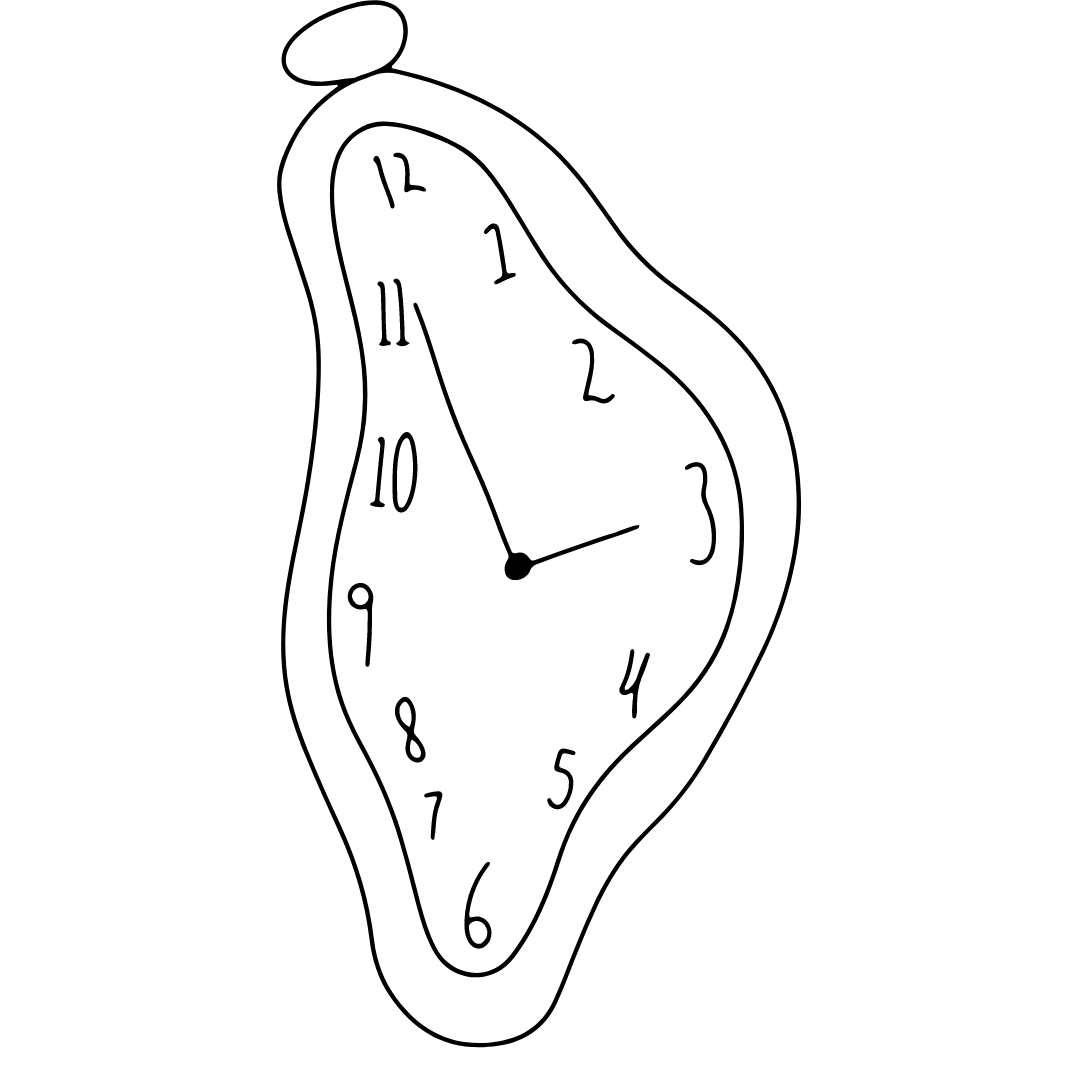
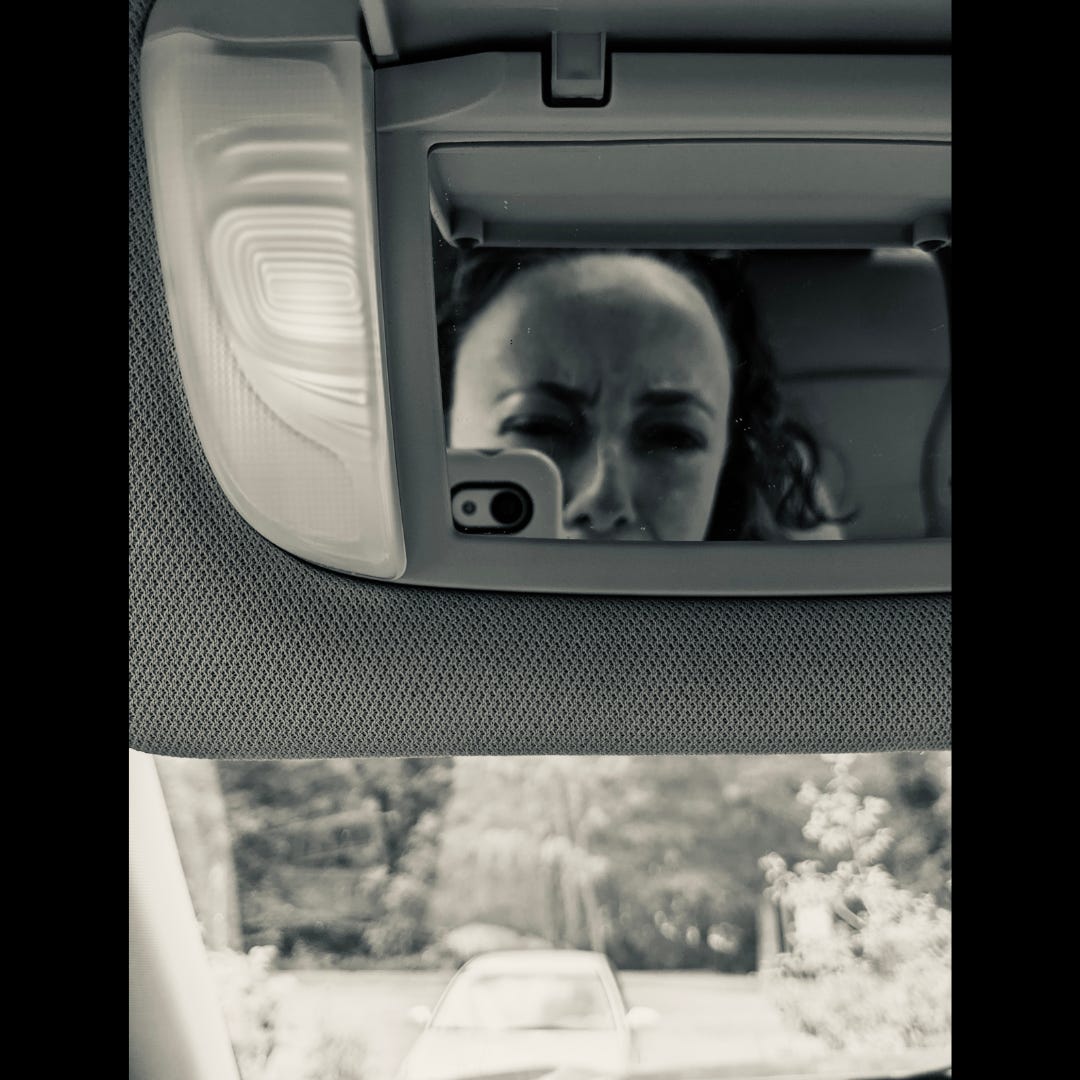

After liking or re-stacking writers’ articles and comments- your pieces are not showing up in my notes/feed/timeline. The SUBSTACK algorithm is rigged.
Tell SUBSTACK your subscribers and followers are not seeing your work.